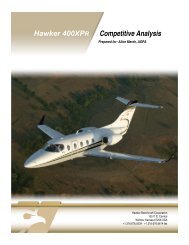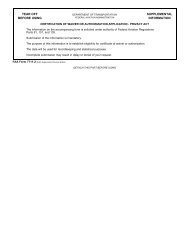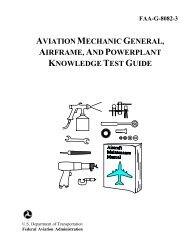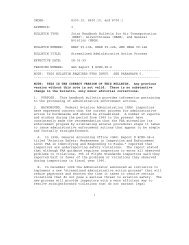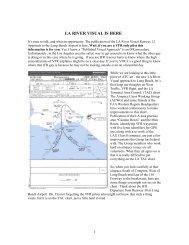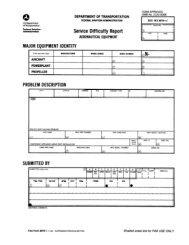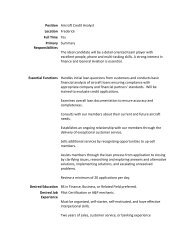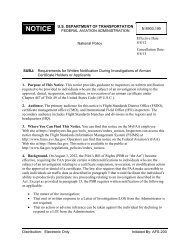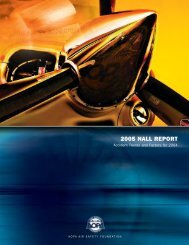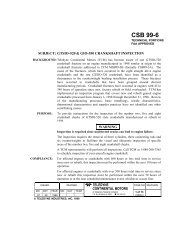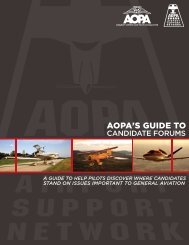2008 Nall Report - Aircraft Owners and Pilots Association
2008 Nall Report - Aircraft Owners and Pilots Association
2008 Nall Report - Aircraft Owners and Pilots Association
You also want an ePaper? Increase the reach of your titles
YUMPU automatically turns print PDFs into web optimized ePapers that Google loves.
Accident Case Study<br />
DFW07FA049<br />
Cessna 172, Armstrong, Texas<br />
Three fatalities<br />
History of Flight<br />
The noninstrument-rated private pilot inadvertently<br />
entered clouds while attempting a night<br />
cross-country in marginal night visual meteorological<br />
conditions. While maneuvering to maintain<br />
visual flight rules, the pilot entered the clouds<br />
<strong>and</strong> consequently lost control of the airplane. The<br />
airplane impacted the ground in a right turn in<br />
a pronounced nose-low attitude. The area of the<br />
accident is sparsely populated <strong>and</strong> there were no<br />
reported eyewitnesses to the accident. A pilot<br />
flying in the vicinity of the accident pilot reported<br />
several cloud layers between 1,500 <strong>and</strong> 6,000<br />
feet mean sea level. Examination of the wreckage<br />
did not reveal any anomalies or pre-impact<br />
defects. The pilot had no actual instrument time<br />
<strong>and</strong> was not prepared to enter instrument meteorological<br />
conditions.<br />
Pilot Information<br />
The VFR-only private pilot, age 26, had a total of<br />
85 hours of flight time, all in the same make <strong>and</strong><br />
model as the accident airplane.<br />
Weather<br />
Conditions were reported as dark night IMC at<br />
the accident site; the nearest reporting point indicated<br />
sky conditions of 1,600 scattered, 6,000<br />
broken, <strong>and</strong> visibility 10 statute miles. Winds<br />
were from 050 degrees at 8 knots.<br />
Probable Cause<br />
The pilot’s continued flight into adverse weather<br />
conditions resulting in a loss of control. Contributing<br />
factors were the dark night conditions, the<br />
clouds, low ceilings, <strong>and</strong> the pilot’s limited night<br />
<strong>and</strong> instrument experience.<br />
ASF Comments<br />
This is a classic example of the VFR into IMC accident.<br />
Combining marginal weather with night<br />
flight <strong>and</strong> low instrument experience is a potentially<br />
lethal mix.<br />
17



